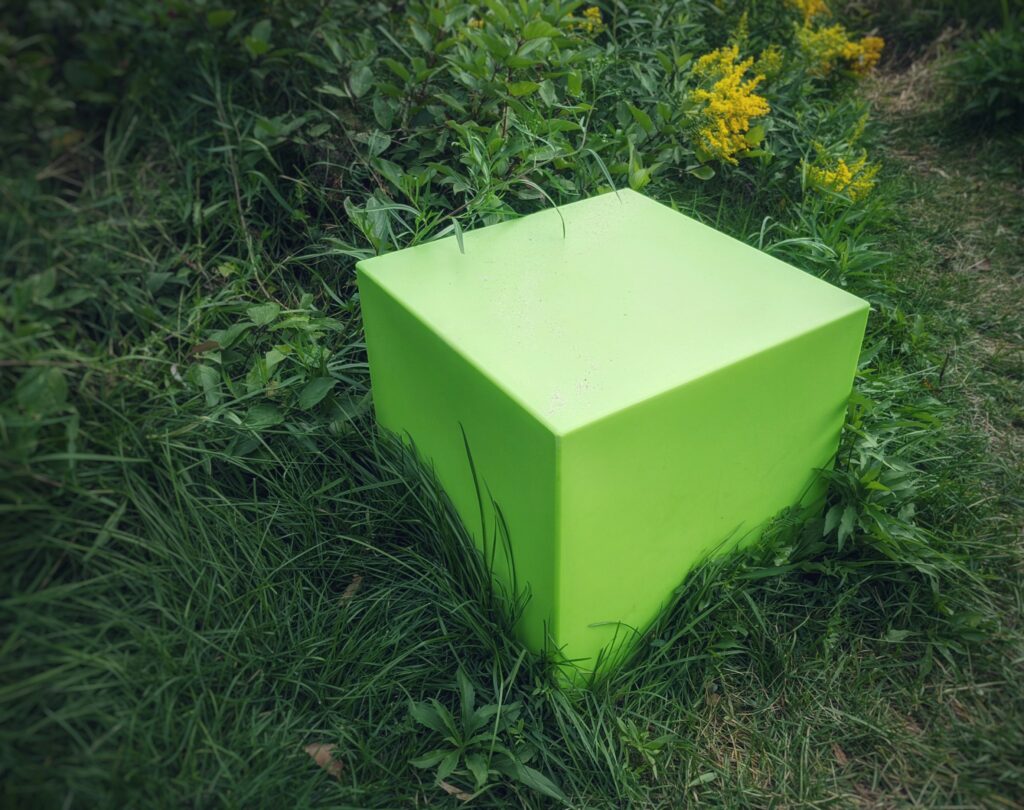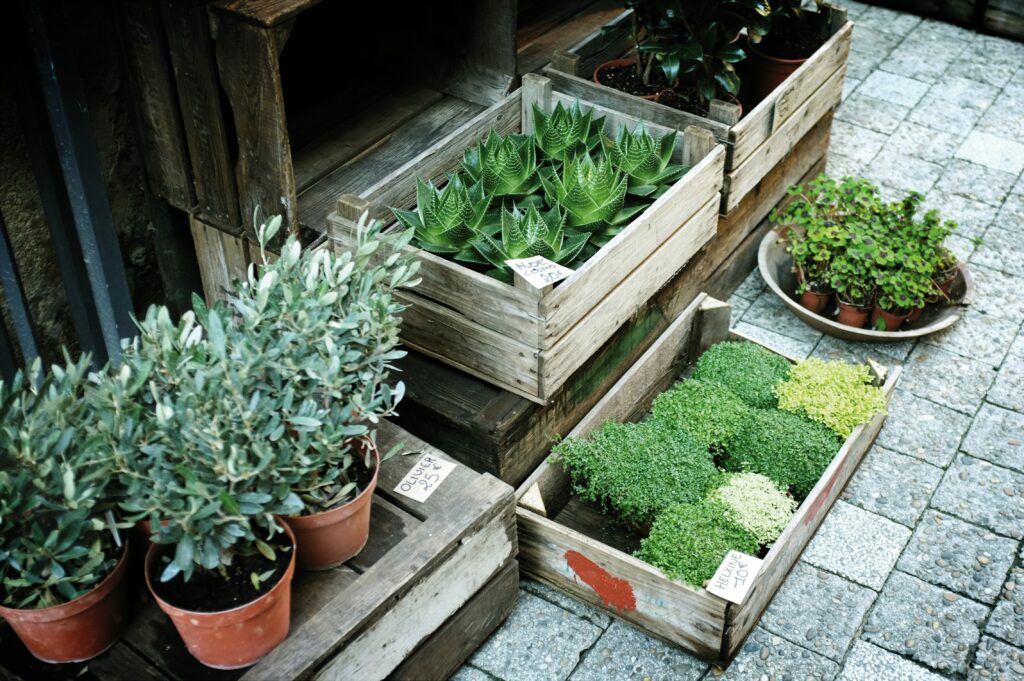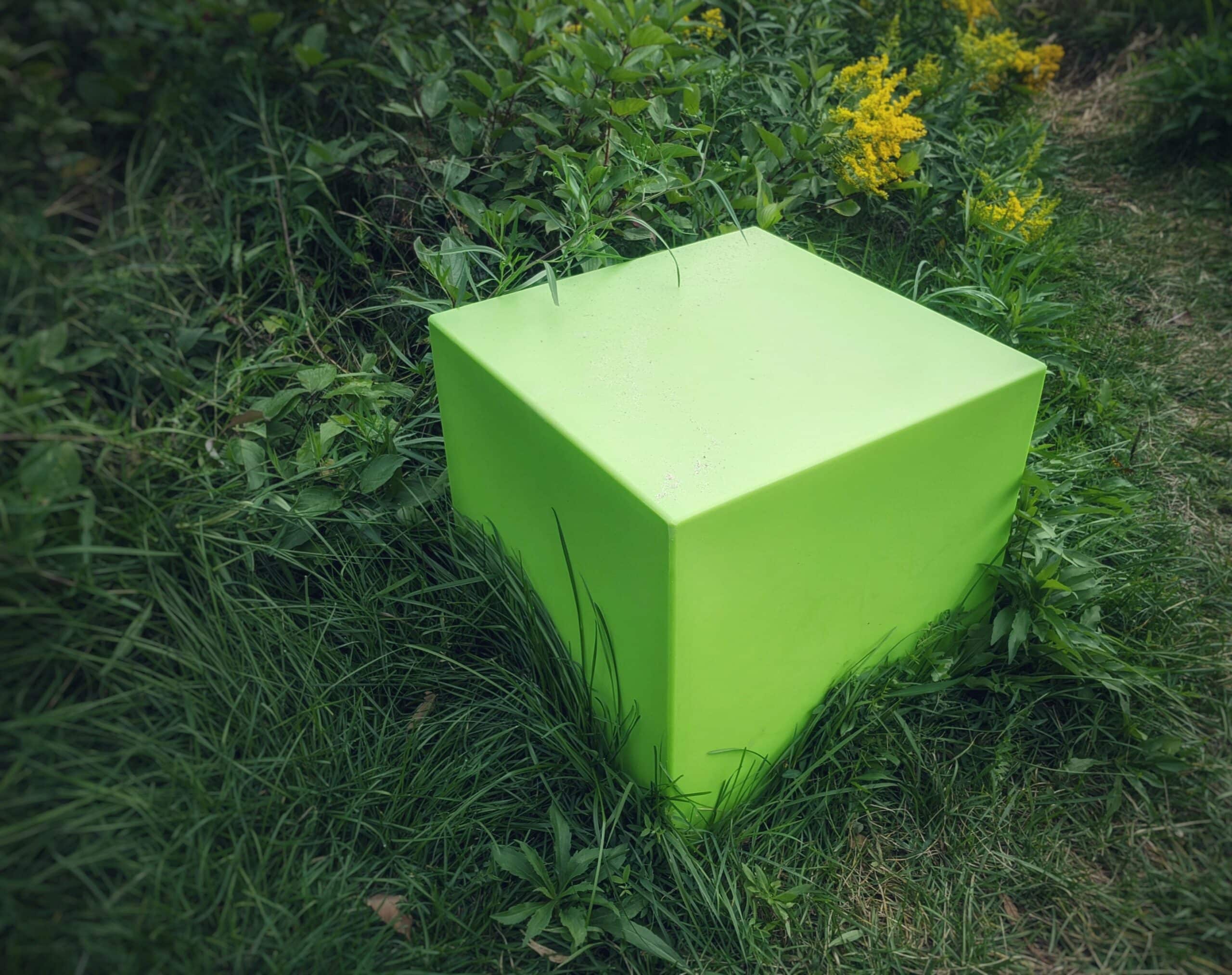Anúncios
Making the right choice when it comes to container sizes can be a game-changer. This comprehensive guide will delve deep into everything you need to know about the ideal container sizes for your greenery. With the right knowledge, not only can you optimize the growth of your plants, but also transform your space into a stunning green haven. 🌿

We understand that knowing how to pair your plants with the perfect container size can be daunting. This is why we’ll uncover the ins and outs of various container sizes, and how to choose based on the type of greenery you have. Whether you’re just starting with your first plant or are a seasoned green thumb, this guide can help you make informed decisions for healthy and thriving plants. 🌱
Anúncios
From the importance of container size to the potential growth of your greenery, this guide aims to equip you with everything you need to know. Also included will be expert tips and tricks to guide you through your journey of perfect planting. So, get ready to immerse yourself in a world of greenery, armed with the knowledge to select the best container sizes for your plants. 🍃
Understanding Plant and Container Sizes
The first step in selecting the perfect container for your greenery is understanding the sizes of both the plant and the container. Plants come in various sizes, from tiny seedlings to full-grown trees, and each size requires a different container. The same applies to containers, which range in size from small pots for individual plants to large planters that can accommodate multiple plants.
Anúncios
Plant Size: A plant’s size is typically determined by its height, the spread of its foliage, and its root system. The size of the root system is especially important because it determines how much space the plant needs to grow and flourish.
Container Size: The size of a container is usually measured by its diameter and depth. The diameter affects how much room the plant’s root system has to spread, while the depth impacts how deep the roots can grow.
Calculating the Correct Container Size
Choosing the right container size is one of the most critical steps in setting up a successful container garden. A pot that is too small can restrict root development, dry out too quickly, or topple over from the plant’s weight. On the other hand, an overly large container may retain too much water, leading to root rot and stunted growth.
🌱 Know Your Plant’s Root Structure
To calculate the appropriate size, consider the mature size and root depth of your plant:
- Shallow-rooted plants (e.g., lettuce, spinach, strawberries): Require containers 6–8 inches deep.
- Medium-rooted plants (e.g., peppers, herbs, petunias): Do best in containers that are 10–12 inches deep.
- Deep-rooted plants (e.g., tomatoes, carrots, beans, dwarf citrus trees): Need containers at least 16–18 inches deep and wide.
📏 General Container Sizing Guide
A rough estimation formula to follow is:
- For every 12 inches of plant height, aim for a pot that is 1 gallon in volume. For example, a 3-foot tomato plant typically needs at least a 5-gallon container.
- Root-bound signs, such as roots growing out of the drainage holes or circling the inside of the pot, indicate that a larger container is needed.
🧮 Multiple Plants in One Pot?
When grouping plants together in one container (e.g., for companion planting), combine their root zone estimates and ensure the container can accommodate their collective needs in both depth and width. For example, if planting basil and marigolds together, choose a pot that’s 12 inches deep and wide, to allow both plants to thrive without crowding.
🏺 Choosing the Right Material for Your Container
Beyond size, the material of the container plays a pivotal role in the success of your plants. Each material affects moisture retention, temperature control, weight, durability, and aesthetics.
🌿 Plastic Containers
- Pros: Lightweight, inexpensive, available in various shapes and sizes, and retains moisture longer than porous materials.
- Cons: Can become brittle and crack under prolonged sun exposure. Dark-colored plastic pots may overheat roots in hot climates.
- Best for: Moisture-loving plants like ferns, tropicals, and annual flowers. Also suitable for balconies or decks where weight is a concern.
🪵 Wooden Containers
- Pros: Natural appearance, good insulation, and easy to customize (e.g., built-in drainage).
- Cons: Prone to rot and insect damage over time unless treated or made from rot-resistant woods like cedar, redwood, or teak.
- Tip: Line the interior with landscape fabric to prolong the container’s life while allowing drainage.
- Best for: Edible gardens, herbs, shrubs, and raised planters. Adds rustic charm to patios and decks.
🪨 Clay or Terracotta Containers
- Pros: Aesthetic appeal with an earthy, rustic look; porous, which improves airflow and prevents overwatering.
- Cons: Heavier than other materials, prone to cracking in freezing weather, and dries out quickly in hot conditions.
- Tip: Soak terracotta pots in water before planting to reduce initial moisture loss.
- Best for: Drought-tolerant plants like succulents, cacti, and Mediterranean herbs (e.g., thyme, lavender).
🏺 Ceramic (Glazed) Containers
- Pros: Durable and available in many vibrant colors and styles; non-porous surface retains water better than terracotta.
- Cons: Heavier, more expensive, and may require careful handling to avoid chipping or cracking.
- Best for: Ornamental houseplants, display flowers, or decorative container gardens indoors or outdoors.
🔩 Metal Containers
- Pros: Sleek and modern aesthetic, highly durable, and available in various sizes.
- Cons: Can heat up quickly in the sun and may rust if not galvanized or treated.
- Tip: Use a plastic liner or insulating material to protect roots from extreme temperature fluctuations.
- Best for: Industrial-themed gardens, urban balconies, or container arrangements where style is a priority.
🧺 Fabric Grow Bags
- Pros: Lightweight, breathable, excellent drainage and root pruning, easy to store when not in use.
- Cons: Shorter lifespan than hard containers; may require more frequent watering.
- Best for: Vegetables like potatoes, tomatoes, or leafy greens; great for small-space and balcony gardens.
Matching Size & Material for Maximum Plant Health
When selecting containers for your plants, always balance size, material, and plant needs. Remember that deeper pots help stabilize tall plants and support deeper roots, while wider, shallow pots are perfect for herbs, flowers, or spreading crops. The material you choose not only influences the look of your space but also affects how often you’ll need to water and maintain your plants.
Whether you’re curating a minimalist succulent display in clay pots or building a lush tomato and basil duo in a large plastic container, understanding these dynamics ensures your container garden thrives season after season. 🌼🌱
⚖️ Considering the Weight of the Container
Container weight is often an overlooked aspect of gardening, yet it plays a pivotal role in both the practicality and functionality of your setup. The total weight of a planted container includes the weight of the container itself, the soil, water, and the plant—especially as it grows larger and heavier over time.
🪨 Why Weight Matters
- Stability: For tall, top-heavy plants (like small trees, tomatoes, or sunflowers), a heavier container provides a stable base and minimizes the risk of tipping over in high winds or when bumped.
- Structural Load: On balconies or rooftop gardens, excessive weight can pose a safety hazard. Always verify the weight-bearing capacity of your surface, especially when grouping several containers together.
- Ease of Mobility: Lightweight containers are easier to relocate, which is beneficial for:
- Moving plants into or out of the sun.
- Bringing sensitive plants indoors during extreme weather.
- Rotating crops or rearranging a patio layout.
🚚 Solutions for Managing Container Weight
Double Potting: Place a lightweight nursery pot inside a decorative (but stationary) outer pot. This allows you to lift only the inner pot when needed, minimizing strain and mess.
Lightweight Materials: Opt for containers made of plastic, fiberglass, resin, or fabric grow bags for easy mobility.
Wheeled Planters: Use rolling plant caddies or containers with built-in casters for larger or heavier pots. These are especially useful for large indoor plants or outdoor container trees.
Understanding the Drainage Needs of Your Plants
Drainage is one of the most important factors in container gardening. Unlike in-ground gardening, where excess water naturally filters away, containers can trap water—leading to soggy soil, root rot, and ultimately plant failure.
🌊 The Importance of Good Drainage
Without adequate drainage:
- Roots suffocate due to a lack of oxygen.
- Pathogens like fungi and bacteria thrive in waterlogged soil.
- Nutrient uptake is hindered, as saturated soil prevents roots from functioning efficiently.
🕳️ Drainage Holes: Your First Line of Defense
- Most quality containers include pre-drilled drainage holes, but if your container lacks them, it’s essential to create them:
- Use a drill with a masonry bit for ceramic or concrete pots.
- For plastic or resin, a standard drill bit will do.
- Always drill at the lowest point to ensure gravity helps water escape.
- Number and Size: Aim for at least one hole that’s ½ to 1 inch in diameter. For larger pots, add multiple holes evenly spaced at the bottom.
🪨 Improving Drainage with Material Layers
Though not a substitute for proper holes, layering the bottom of your container can improve water flow:
- Recommended Materials:
- Gravel
- Broken terra cotta
- Pebbles
- Coarse sand
- Expanded clay pellets (like LECA)
- How to Use:
- Add 1–2 inches of the chosen drainage material at the bottom.
- Place a piece of mesh or landscape fabric over it to prevent soil from seeping through while still allowing water to flow.
🪴 Choosing the Right Soil Mix
Even with drainage holes and materials, poor-quality or overly compacted soil can hold too much water. Use potting mix formulated for containers—never use garden soil, which tends to retain water and compact over time.
- Additives like perlite, vermiculite, coconut coir, or pine bark fines can enhance drainage and aeration.
🧰 Pro Tip: Combine Weight & Drainage Wisely
If you’re using lightweight containers (e.g., for mobility), ensure stability by:
- Filling the bottom inch with heavier materials (e.g., sand, stones).
- Positioning containers sheltered from wind to prevent tipping.
- Choosing compact, well-branched plants that don’t easily topple.
Likewise, for heavy containers that don’t drain well (like glazed ceramic or decorative urns), use a plastic insert pot with holes to control drainage and simply slip it inside the decorative outer shell.
Matching Your Plants to Their Ideal Containers
Once you understand the size, material, and drainage needs of your plants, you can begin matching them to their ideal containers.
- Small, shallow-rooted plants like succulents and herbs do well in small to medium-sized pots.
- Large plants or plants with deep root systems, such as trees and shrubs, need large, deep containers.
- Plants that require consistent moisture, like ferns and philodendrons, thrive in plastic containers.
- Plants that prefer dry conditions, such as cacti and succulents, do well in clay or ceramic containers.
- Large, heavy plants need sturdy containers that can support their weight.
Final Considerations: Aesthetics and Functionality
In addition to size, material, and drainage, you should also consider the aesthetics and functionality of your containers. Choose containers that complement your home decor and meet your functional needs, such as ease of movement and maintenance.
Aesthetics
The container is not only a vessel for your plant but also a part of your home decor. Choose a container that matches the style and color scheme of your home. Consider the shape, color, and texture of the container and how they will complement your plant and your home decor.
Functionality
Consider the functionality of your container. Does it have drainage holes? Is it easy to move? Can it withstand the weather conditions in your area? These are all important factors to consider when selecting the ideal container for your greenery.
In conclusion, selecting the ideal container for your greenery involves understanding the sizes of your plants and containers, choosing the right material for your container, understanding the drainage needs of your plants, and considering the aesthetics and functionality of your containers. By considering these factors, you can create a beautiful and healthy environment for your greenery.
Conclusion
In conclusion, choosing the right container size for your plants is pivotal to ensuring optimal growth and development. As highlighted in “Perfect Planting: Selecting the Ideal Container Sizes for Your Greenery”, different plants require various pot sizes based on their specific needs and growth patterns. Understanding the root structure, water requirements, and maturity size of your plants can significantly influence your container selection process. Smaller pots may restrict growth and inhibit plant health, while oversized containers can lead to overwatering and root rot.

Furthermore, regular monitoring and repotting when necessary can promote a healthy, thriving indoor garden. As your plants grow, be ready to transfer them to larger containers to accommodate their increasing root systems. Equally important is the use of high-quality soil and regular watering to support plant health.
Lastly, remember that while container size plays a significant role, it’s only part of the puzzle. Your plants’ overall health and vitality also depend on correct positioning, sufficient light, and adequate nutrition. By employing these strategies, you’ll be on your way to creating a vibrant, flourishing indoor greenery. Happy planting!

